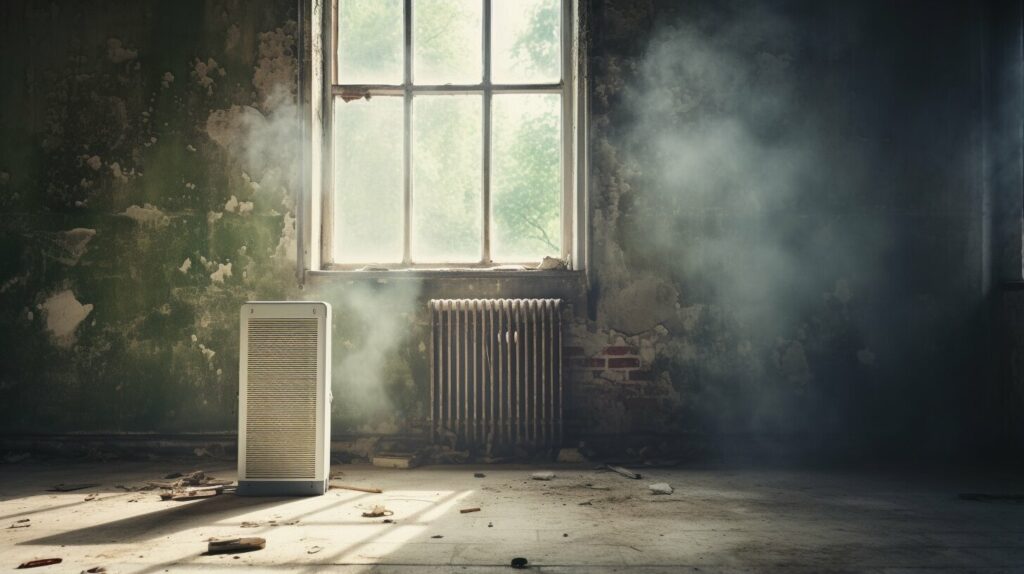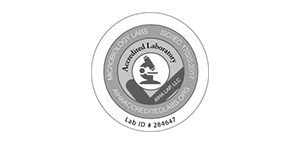
Do Air Purifiers Help with Mold?
If you’re concerned about indoor air quality and mold growth in your home, you may be wondering if air purifiers can help. Mold is a common problem that can cause a range of health issues, from allergic reactions to respiratory problems.
Fortunately, air purifiers are a useful tool in preventing and reducing the presence of mold spores in your home. By filtering the air and capturing mold particles, air purifiers can help improve indoor air quality and minimize the risk of mold-related health issues.
Key Takeaways:
- Air purifiers can be effective in dealing with mold by reducing the presence of mold spores in your home
- Mold growth can cause health issues and affect indoor air quality
- Choosing the right air purifier and properly maintaining it is key in preventing mold growth in your home
Understanding the benefits of air purifiers for mold prevention
If you want to combat mold in your home, using an air purifier can be an effective tool. Air purifiers help reduce the presence of mold spores in the air, which can decrease the likelihood of mold growth and minimize the risk of health problems associated with mold exposure.
Air purifiers work by drawing in air from a room and passing it through filters that capture mold spores and other pollutants. The filtered air is then released back into the room, creating a cleaner and healthier environment.
One of the biggest benefits of using air purifiers for mold prevention is improved indoor air quality. The fewer mold spores present in the air, the better the air quality will be. This can be particularly beneficial for individuals with allergies or respiratory issues, as mold can exacerbate these conditions. By reducing mold spores in the air, air purifiers can help minimize these symptoms and improve overall comfort in the home.
Another advantage of using air purifiers for mold prevention is the potential to minimize allergic reactions to mold. For individuals with mold allergies, the presence of mold spores in the air can trigger a range of symptoms, including sneezing, coughing, and itchy eyes. By removing mold spores from the air, air purifiers can help alleviate these symptoms and improve the overall quality of life for those affected by mold allergies.
Choosing the right air purifier for mold: factors to consider
If you’re looking for an air purifier specifically designed to combat mold, it’s important to consider a few key factors before making your purchase.
The first factor to consider is the type of air purifier. Look for models that utilize HEPA filtration, as these are most effective at capturing mold spores. Additionally, consider an air purifier with a pre-filter, as this can help capture larger mold particles that may clog the main HEPA filter.
The next factor to consider is the filtration technology. Some air purifiers use activated carbon filters to help remove odors, while others use UV-C technology to kill mold spores. Consider which technology would be most effective for your specific needs.
Another important factor to consider is room size coverage. Make sure the air purifier you choose is appropriate for the size of the room it will be used in. Most models will indicate the maximum room size they can effectively purify.
Finally, consider any additional features that may be beneficial for mold prevention, such as automatic shut-off when the filter needs to be replaced, or a built-in humidifier to help control moisture levels.
Maintaining an Air Purifier for Optimal Mold Prevention
Keeping your air purifier in good working condition is essential to ensure its effectiveness in removing mold from your home’s air. Here are some practical tips to maintain your air purifier for optimal mold prevention:
1. Regularly check the filters – Most air purifiers come with replaceable filters, and it’s vital to check them often to determine when they need replacing. Some models have a filter replacement light or indicator to make it easier for you.
2. Clean the pre-filter – A pre-filter can trap larger particles, such as pet hair, dust, and debris, thereby reducing the workload of the primary filter. Be sure to clean the pre-filter every few weeks, depending on the amount of dust and dirt that accumulates.
3. Clean the primary filter – Over time, the primary filter can become clogged with microorganisms, such as mold, and impede the air purifier’s effectiveness. Check the manufacturer’s instructions on how to clean the filter and how often it should be done.
4. Clean the air purifier exterior – Dust and dirt can accumulate on the air purifier’s exterior, which can impact its performance. Regularly wipe the exterior with a damp cloth and avoid using cleaning solutions that might damage the unit.
5. Monitor odor – If your air purifier has an activated carbon filter, it can help eliminate odors in your home. However, if you notice persistent unpleasant smells, it may be an indication that the filter requires replacement.
By following these tips, you can ensure that your air purifier remains in top condition, and it can effectively remove mold spores from your indoor air.
Additional steps to prevent mold growth in your home
To supplement the use of an air purifier for mold prevention, there are additional steps you can take to keep your home mold-free. First, monitor the humidity levels in your home and keep them below 60% to discourage mold growth. You can utilize a hygrometer to measure the humidity levels and a dehumidifier to reduce moisture in the air.
Second, improve ventilation in your home by opening windows and doors, running fans in the bathroom and kitchen, and using an air conditioning system with a HEPA filter. Proper ventilation can help remove excess moisture from the air and prevent mold from developing.
Finally, it’s important to address any water leaks or moisture issues in your home promptly. Repair any leaks and dry any damp areas within 24 to 48 hours to prevent mold growth. Consider using mold-resistant materials in areas prone to moisture, such as the bathroom and basement.
Conclusion: Breathe easier with an air purifier for mold
Congratulations on taking the first step towards improving the air quality in your home. Using an air purifier to combat mold is a smart move that can benefit both your health and your comfort. By reducing the presence of mold spores in the air, you can minimize the risk of allergic reactions and other health issues.
Remember, choosing the right air purifier for mold is crucial. Consider factors such as filtration technology, room size coverage, and additional features like UV-C lights that can help neutralize mold spores. Regular maintenance of your air purifier is also essential for optimal performance.
Using an air purifier alone may not entirely prevent mold growth in your home. It’s also crucial to take additional steps to prevent moisture buildup and air out damp areas. Regularly checking humidity levels and addressing any leaks or moisture problems can go a long way.
Incorporating an air purifier into your mold prevention efforts is an excellent way to breathe easier and protect your health. By following the tips outlined in this article, you can ensure that you select the right air purifier and maintain it for optimal mold prevention results. Thank you for reading!
FAQ
Q: Do air purifiers help with mold?
A: Yes, air purifiers can help with mold by removing mold spores from the air, reducing the presence of mold in your home and improving indoor air quality.
Q: What are the benefits of air purifiers for mold prevention?
A: Air purifiers work to remove mold spores from the air, which can help reduce the growth of mold in your home. Using air purifiers for mold prevention can improve indoor air quality and minimize allergic reactions to mold.
Q: How do I choose the right air purifier for mold?
A: When choosing an air purifier for mold, consider factors such as the type of air purifier, filtration technology, room size coverage, and additional features that may be beneficial for mold prevention.
Q: What are the top air purifiers for mold removal?
A: There are several air purifiers available on the market that are known for their effectiveness in removing mold spores. We recommend researching and considering options such as [insert names of recommended air purifiers] for mold removal.
Q: How can air purifiers help with mold allergies?
A: Air purifiers can help alleviate symptoms associated with mold allergies by reducing the presence of mold spores in the air, creating a cleaner and healthier breathing environment.
Q: How do I maintain an air purifier for optimal mold prevention?
A: To maximize the effectiveness of your air purifier in combating mold, make sure to regularly replace filters and clean the device according to the manufacturer’s instructions.
Q: What additional steps can I take to prevent mold growth in my home?
A: In addition to using an air purifier, you can prevent mold growth in your home by monitoring humidity levels, improving ventilation, and addressing any water leaks or moisture issues promptly.







